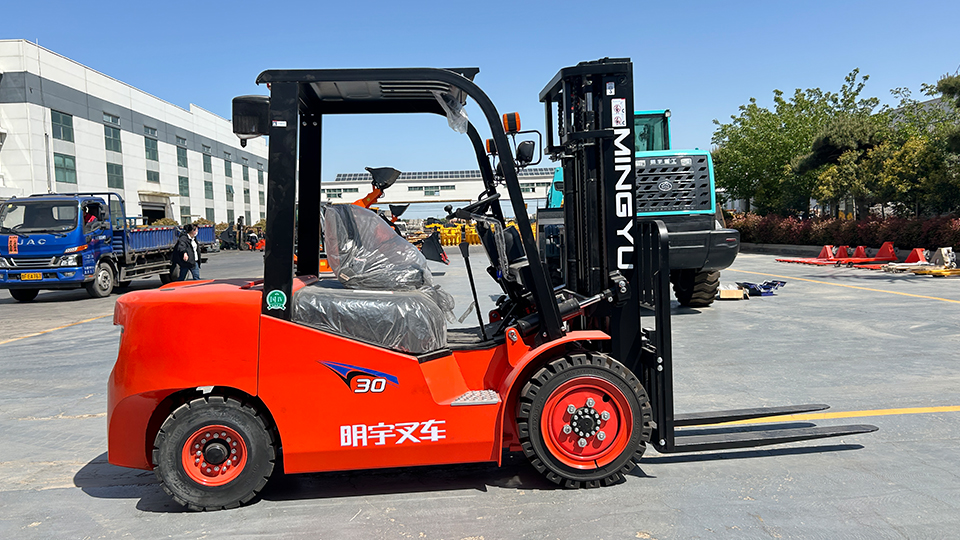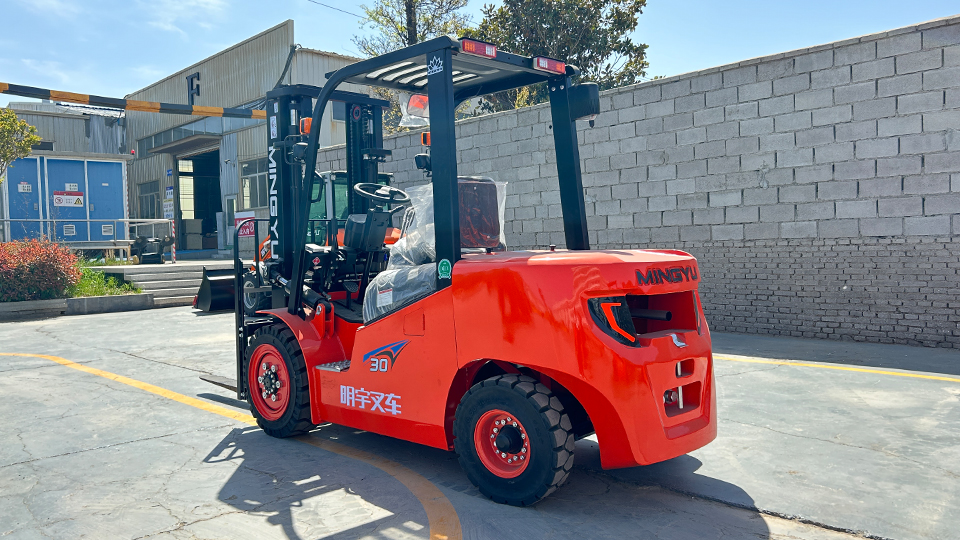
The Foundation of Efficiency and Safety: A Comprehensive Technical Guide to Proper Forklift Operation
The forklift stands as a cornerstone of modern logistics and material handling, enabling the efficient movement of goods across diverse industries. However, this powerful machinery demands more than just basic control manipulation. Proper forklift operation is a nuanced skill set encompassing a deep understanding of equipment mechanics, rigorous adherence to safety protocols, and the application of precise operational techniques. Neglecting any of these aspects can lead to equipment damage, product loss, serious injuries, or even fatalities. This comprehensive technical article delves into the essential principles and practices for operating a forklift safely, efficiently, and in accordance with industry best standards.
I. The Prerequisite: Operator Qualification and Training
Operating a forklift is not a task for the untrained. Regulatory bodies and industry standards mandate that all forklift operators must be properly trained and certified. This training typically encompasses:
Formal Instruction: Classroom learning covering forklift fundamentals, controls, stability principles, load handling, site-specific hazards, and relevant regulations (e.g., OSHA in the United States).
Practical Training: Hands-on operation under the direct supervision of a qualified instructor, allowing trainees to develop proficiency in maneuvering, load handling, and various operational scenarios.
Evaluation: A comprehensive assessment of both theoretical knowledge and practical skills to ensure competency.
Certification: Upon successful completion, operators receive certification, which often needs to be renewed periodically.
Site-Specific Training: Familiarization with the specific forklift models used at a particular worksite, as well as site layout, traffic rules, and potential hazards.
Operating a forklift without proper certification is not only illegal but also significantly increases the risk of accidents.

II. The Essential First Step: Pre-Operation Inspection
Before commencing any work, a thorough pre-operation inspection is critical. This proactive measure helps identify potential mechanical issues or damage that could compromise safety and efficiency. The inspection typically includes:
Fluid Levels: Checking engine oil, hydraulic fluid, coolant, brake fluid, and fuel levels. Ensure they are within the manufacturer's recommended ranges. Low fluid levels can lead to component failure.
Tires and Wheels: Inspecting tire pressure (for pneumatic tires), tire condition (cuts, bulges, wear), and wheel nut tightness. Uneven tire pressure or loose nuts can affect stability and control. For solid or cushion tires, check for chunks or significant wear.
Forks and Mast: Examining the forks for bends, cracks, or other damage. Ensure they are securely attached and the locking pins are engaged. Inspect the mast channels, rollers, and chains/cables for wear, damage, and proper lubrication. Verify the free movement of the carriage.
Safety Equipment: Testing the functionality of the seatbelt, overhead guard (if equipped), lights (headlights, taillights, warning lights), horn, and any other safety devices. Ensure warning labels and capacity plates are present and legible.
Controls: Briefly checking the operation of all controls (lift, lower, tilt, travel direction, steering, brakes, parking brake) without starting the engine to identify any obvious binding or malfunctions.
Battery (for Electric Forklifts): Inspecting the battery connections for corrosion and ensuring proper electrolyte levels (if applicable). Check the condition of the charging cable and connector.
Any defects or malfunctions identified during the pre-operation inspection must be reported immediately and the forklift taken out of service until the issues are resolved by qualified maintenance personnel.
III. Starting and Basic Maneuvering: Laying the Groundwork for Smooth Operation
Once the pre-operation check is complete, the next step involves safely starting and maneuvering the forklift:
Operator Restraint: Always fasten the seatbelt before starting the engine. This is crucial for operator safety in the event of a tip-over.
Neutral Position: Ensure the transmission is in neutral or park (depending on the model) before starting the engine. This prevents unexpected movement.
Ignition: Turn the key to the "on" position and then to the "start" position. Release the key once the engine starts. Avoid prolonged cranking. For electric forklifts, follow the specific start-up procedure outlined in the operator's manual.
Initial Checks: After starting, listen for any unusual noises and monitor the instrument panel for warning lights. Allow the engine to warm up slightly before engaging hydraulic functions.
Forward and Reverse Travel: Select the desired direction of travel using the directional control lever. Gently depress the accelerator pedal for forward or reverse movement. The speed is proportional to the pedal pressure. Smooth and gradual acceleration is essential.
Braking: To stop, release the accelerator and gently apply the brake pedal. Avoid sudden or harsh braking, which can cause the load to shift or the forklift to become unstable. Understand the difference between the service brake and the parking brake. The parking brake should be used when the forklift is stationary.
Steering: Be aware that most forklifts utilize rear-wheel steering, resulting in a tighter turning radius but requiring wider turns to avoid the rear of the forklift swinging out. Steer smoothly and anticipate the rear swing, especially in confined spaces. For tiller-steered forklifts (stand-up riders), understand the direct relationship between tiller movement and steering direction.
IV. The Art of Load Handling: Precision and Stability

The core function of a forklift is to lift, move, and stack loads safely and efficiently. This requires mastery of the hydraulic controls and a keen understanding of load dynamics:
Approaching the Load: Approach the load squarely and at a slow, controlled speed. Ensure the forks are at the correct height and aligned with the pallet or load supports.
Engaging the Load: Carefully drive the forklift forward until the forks are fully under the load. For palletized loads, ensure the forks are inserted completely into the pallet stringers.
Lifting the Load: Slowly and smoothly raise the load to the minimum height necessary for travel (typically 4-6 inches off the ground). Avoid jerky lifting motions.
Tilting the Load: Generally, tilt the load back slightly (a few degrees) once it is raised to improve stability during transport. Be cautious not to tilt back excessively, especially with high or unstable loads.
Transporting the Load: Travel with the load held low to the ground. Maintain a safe speed and be aware of the forklift's load capacity and the load center. Avoid sudden stops, starts, or sharp turns. Navigate slopes and uneven surfaces with extreme caution, typically traveling straight up or down the incline with the load facing uphill.
Stacking the Load: When approaching a stacking area, ensure the area is clear and the stacking surface is stable. Position the forklift squarely in front of the desired location. Slowly raise the load to the required height, ensuring it remains level. Carefully drive forward until the load is directly over the stacking position. Slowly lower the load until it is fully supported. Level the forks before withdrawing. Back away slowly and cautiously.
Unstacking the Load: Approach the stack squarely. Carefully position the forks under the desired load. Lift the load slightly to clear the stack. Tilt the load back slightly for stability. Back away slowly and cautiously. Lower the load to the travel height before transporting.
Load Capacity and Load Center: Always be aware of the forklift's rated load capacity, which is clearly indicated on the data plate. Understand how the load center (the distance from the front face of the forks to the center of gravity of the load) affects the lifting capacity. As the load center increases, the lifting capacity decreases. Never exceed the rated capacity.
V. Navigating the Operational Environment: Awareness and Adaptability
Forklift operation often occurs in dynamic and potentially hazardous environments. Maintaining constant awareness and adapting to the surroundings is crucial:
Pedestrian Safety: Pedestrians always have the right-of-way. Be extremely vigilant for pedestrians, make eye contact, and use the horn to signal your presence. Travel slowly in areas with pedestrian traffic.
Obstacles and Hazards: Be aware of any obstacles in the travel path, such as doorways, ramps, uneven surfaces, spills, and overhead obstructions. Maintain adequate clearance.
Traffic Rules: Adhere to any established traffic rules and speed limits within the workplace.
Visibility: Ensure clear visibility in the direction of travel. If the load obstructs forward vision, travel in reverse, ensuring the path behind is clear and using a spotter if necessary.
Communication: Use clear and concise communication with other workers, especially when operating in congested areas.
Environmental Conditions: Be aware of how environmental conditions such as wet floors, poor lighting, or extreme temperatures can affect forklift operation and adjust your techniques accordingly.
VI. Parking Procedures: Securing the Machine Safely
Proper parking of the forklift is essential to prevent accidents and unauthorized use:
Designated Parking Areas: Park the forklift in designated parking areas whenever possible.
Level Surface: Park on a level surface to prevent the forklift from rolling.
Lower the Forks: Fully lower the forks to the ground.
Engage the Parking Brake: Always engage the parking brake securely.
Neutral Position: Place the transmission in neutral or park.
Turn Off the Engine: Turn off the engine or power.
Remove the Key: Remove the ignition key to prevent unauthorized operation.
VII. Battery Care and Maintenance (for Electric Forklifts): Ensuring Optimal Performance
For electric forklifts, proper battery care and maintenance are crucial for optimal performance and longevity:
Charging Procedures: Follow the manufacturer's recommended charging procedures. Use the correct charger and ensure proper ventilation during charging.
Electrolyte Levels: Regularly check and maintain the proper electrolyte levels in lead-acid batteries (if applicable), adding distilled water as needed.
Cleaning Terminals: Keep battery terminals clean and free from corrosion.
Avoiding Deep Discharge: Avoid completely discharging the battery, as this can shorten its lifespan.
Safe Handling: Handle batteries with care, as they are heavy and contain corrosive materials. Use appropriate lifting equipment and personal protective equipment.
VIII. Ongoing Maintenance and Reporting Issues: A Proactive Approach
Regular maintenance and prompt reporting of any issues are vital for ensuring the continued safe and efficient operation of the forklift:
Daily Checks: Operators should perform a brief visual check of the forklift before each shift, in addition to the more detailed pre-operation inspection.
Scheduled Maintenance: Adhere to the manufacturer's recommended maintenance schedule, which includes periodic servicing by qualified technicians.
Reporting Malfunctions: Immediately report any unusual noises, vibrations, control malfunctions, leaks, or other concerns to the appropriate maintenance personnel. Do not operate a forklift that is known to be malfunctioning.
IX. Specialized Attachments: Expanding Capabilities with Added Responsibility
Forklifts can be equipped with various attachments to handle specialized loads. Operating a forklift with an attachment requires specific training on that particular attachment, as it can significantly alter the forklift's operating characteristics, load capacity, and stability. Always consult the attachment's manual and receive proper instruction before use.
X. Conclusion: Cultivating a Culture of Safety and Proficiency
Proper forklift operation is a multifaceted skill that demands a commitment to safety, continuous learning, and adherence to established procedures. By understanding the principles of forklift mechanics, mastering operational techniques, and prioritizing safety in every task, operators can significantly contribute to a safe and efficient work environment. This technical guide provides a comprehensive foundation, but ongoing training, practical experience, and a proactive approach to safety are essential for becoming a truly proficient and responsible forklift operator. Remember that the forklift is a powerful tool, and its safe and effective operation is a responsibility that should never be taken lightly.
Name: selena
Mobile:+86-13176910558
Tel:+86-0535-2090977
Whatsapp:8613181602336
Email:vip@mingyuforklift.com
Add:Xiaqiu Town, Laizhou, Yantai City, Shandong Province, China